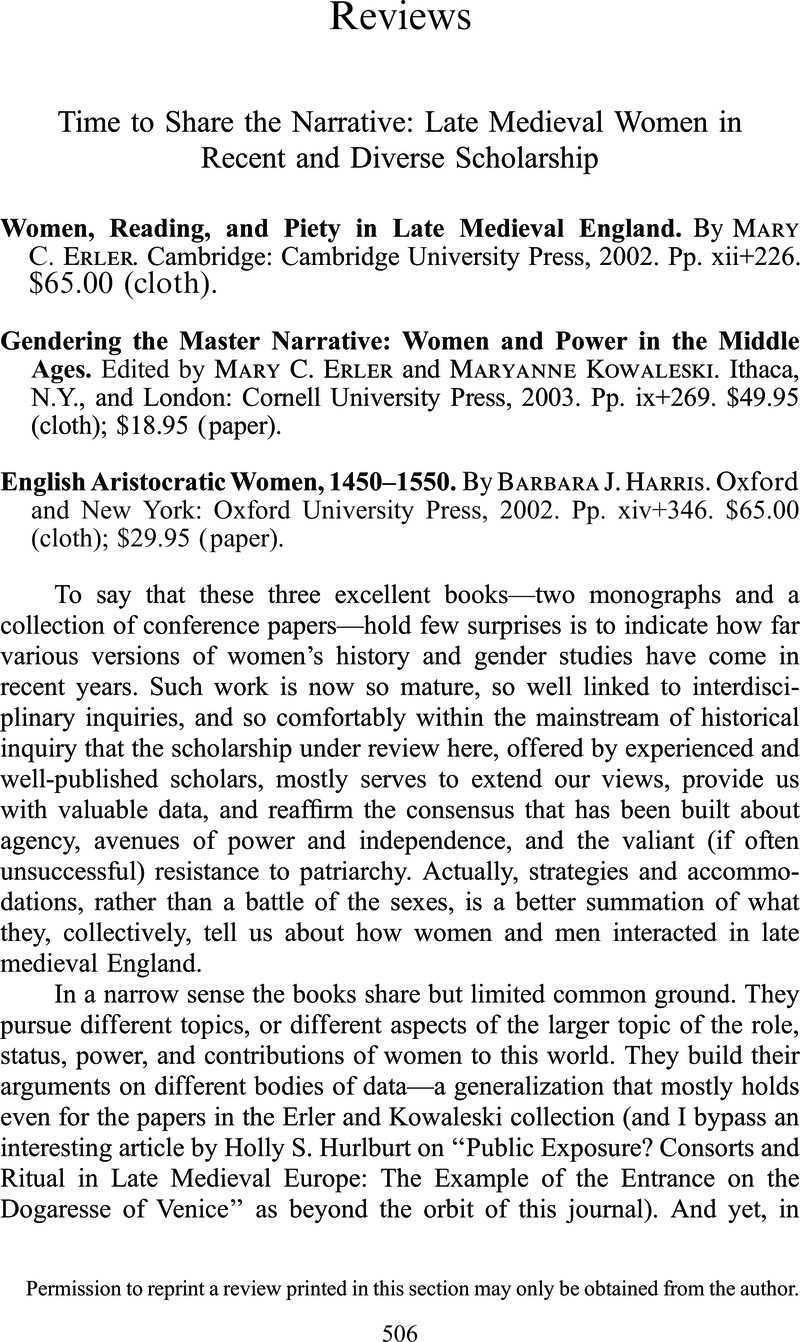No CrossRef data available.
Article contents
Time to Share the Narrative: Late Medieval Women in Recent and Diverse Scholarship - Women, Reading, and Piety in Late Medieval England. By Mary C. Erler. Cambridge: Cambridge University Press, 2002. Pp. xii+226. $65.00 (cloth). - Gendering the Master Narrative: Women and Power in the Middle Ages. Edited by Mary C. Erler and Maryanne Kowaleski. Ithaca, N.Y., and London: Cornell University Press, 2003. Pp. ix+269. $49.95 (cloth); $18.95 (paper). - English Aristocratic Women, 1450–1550. By Barbara J. Harris. Oxford and New York: Oxford University Press, 2002. Pp. xiv+346. $65.00 (cloth); $29.95 (paper).
Published online by Cambridge University Press: 21 December 2012
Abstract

- Type
- Reviews
- Information
- Copyright
- Copyright © North American Conference of British Studies 2004
References
1 Especially in her “Three Fifteenth-Century Vowesses,” in Medieval London Widows, 1300–1500, ed. Barron, Caroline M. and Sutton, Anne (London and Rio Grande, Ohio, 1994), pp. 165–84Google Scholar, and “Exchange of Books between Nuns and Laywomen: Three Surviving Examples,” in New Science out of Old Books: Studies in Manuscripts and Early Printed Books in Honour of A. I. Doyle, ed. Beadle, Richard and Piper, A. J. (Aldershot, Hants, 1995), pp. 360–73Google Scholar.
2 Offered in their “The Powers of Women through the Family,” first published in Feminist Studies 1 (1973): 126–41Google Scholar, and subsequently reprinted in other publications in 1974 and 1988.
3 I am not convinced that this excellent social history is improved or greatly strengthened by the sporadic reference to statistical evidence and numerical assessments of behavior based on a shifting numerical foundation and a universe that varied in size and exactitude of information for various forms of activity. A small point in reviewing such a rich study but perhaps a cautionary point worth making.




